Hand-tinted view of the Shepperd’s Dell bridge and the Columbia River circa 1920s
Serendipity was at work after I posted this recent article on the venerable old Douglas fir that grows at the east end of the historic Shepperd’s Dell Bridge. First, I’ll share some great comments on the article from readers that shed more light on the story of the big fir. Reader Rosemary Shepperd Guttridge writes:
“I use that tree as an indication of age of photo. My photo by Weister has the top in the tree. A slightly newer photo by Kinsey with a date of 1925, the top is out.”
Rosemary is George Shepperd’s great, great-granddaughter and keeper of the Shepperd family history. You can read my 2014 interview with her and see some of Rosemary’s rare photos of Shepperd family history in this article:
Reader Jerry King shared this fascinating bit of history:
“Labor Day weekend in 2017 wasn’t this tree’s only threat. In the summer of 2016, my wife and I were westbound approaching the fir when smoke came up out of the canyon! We parked after crossing the bridge and saw flames crawling up the east bank (north of the bridge). I quickly called 911 and then began the 26-minute wait for the first Corbett Fire truck to arrive. Flames came within 20’ of the grand old fir!”
Jerry’s account raises the question of whether this earlier fire might have actually saved the big fir by burning some of the accumulated fuel and brush on the slope beneath the tree before the big fire swept through in 2017?
_______________
On the same day that Rosemary and Jerry posted their comments on the article, a couple of historic postcards I had bid on arrived in the mail. Both were of Shepperd’s Dell, and both are new images to my ever-growing collection of old photos and postcards. The first is the hand-tinted image at the top of this article. You can view a large version here:
Shepperd’s Dell and the Columbia River (1920s)
What sets this image apart from the many Shepperd’s Dell postcards I’ve collected is the wide view that includes the Columbia River, Sand Island and the pasture land in the floodplain that has now reverted to forests, meadows – and a freeway, of course.
The second image (below) is even more unusual, so I will dissect this one a bit for some of the stories it tells. This is the full image, shot (somewhat impossibly) from the steep cliff at the west end of the Shepperd’s Dell bridge. It features a parade of touring automobiles coming across the bridge, and visitors parked at the east end pullout, as well. Like the first image, it also shows the Columbia River and Sand Island in the distance.
Traffic jam on Shepperd’s Dell bridge in the early days of the historic highway
Photographers back in the day hauled around large format cameras and even larger tripods to capture these photos – a testament to the photographer who staked out this image. There’s good reason why this view is rare!
A closer look at the three vehicles on the bridge (below) suggests that, while this was a well-planned image, it probably wasn’t staged. Only the woman in the middle of the backseat in the first vehicle is looking up at the photographer, and cars still stack up like this on the bridge today as tourists take in the amazing views of Shepperd’s Dell, no prompting required. Given the popularity of auto touring in the early 1900s, it’s likely the historic highway looked like this on any given sunny, summer afternoon (and I’m basing that on the tops down on the cars and shadows showing the sun moving toward the west horizon).
Well, at least SOMEBODY spotted the photographer on the cliff above the bridge! (…the woman looking up from the backseat of the first car)
This photo was taken between 1914 and 1917, and there are surely some auto buffs out there who can identify the makes and years of the vehicles in this image to me, too. While I’m definitely not an auto buff, I did notice that two of the three (!) vehicles on the bridge have their steering wheels on the right side of the car – not unusual at the time, as left-side steering only because predominant with the introduction of the Ford Model T in 1908.
A closer look (below) at the pullout at the east end of the bridge reveals a scene with all manner of activity. Several cars are parked or stopped, with visitors walking onto the bridge for views of the river and Shepperd’s Dell waterfalls – just as we do today. Two children are playing under the big fir – perhaps picking up its fallen cones? The big tree is already impressive in this view, too – at least 3 feet in diameter more than a century ago.
Lots going on at the east end of the bridge (and below the big fir) in this scene!
The scene beyond the pullout, directly under Bishops Cap, really caught my eye. There are several people walking about in the middle of the road and what looks to be a car stopped in the middle of the road. That would be hair raising on this blind corner today, and it probably was back then, too! It is this part of the scene, along with the overall level of activity, that makes me think this photo was captured when the historic Columbia River Highway was dedicated in June 1916.
How did I narrow the image on this card to between 1914 and 1917? The message on the back is key (below), as the postmark confirms the date, and that it was sent from Portland. The Shepperd’s Dell bridge was completed in 1914, and thus this image was captured sometime during that period. The postmark means this card was sent almost exactly one year after the highway was formally dedicated.
1917 Message on the reverse of the Shepperd’s Dell Bridge postcard.
As postmarked postcards go, this one is a real gem. The sender (“Margaret”) not only dated her message, she also describes her “grand trip” along the road pictured on the front of the card – surprisingly few postcards contain messages that speak to the image on the front We can only guess who young Eliott might be in relation to the sender, only that he “is a mighty good boy and wishes to be remember to Aunt Elizabeth.”
Yes, it still is a “grand trip”, Margaret!
Out of curiosity, I looked up Miss Elizabeth’s address and it turns out to be an impressive, turreted townhome (below, with red doors), now part of the Moreland Street Historic District in south Boston. Margaret and Elizabeth would be shocked at the changes both Portland and Boston have seen over the past century, for sure.
Meanwhile, the scene at Shepperd’s Dell remains largely the same as it appears in this old postcard. Even the big fir survives. We should be proud of that, as it didn’t happen by accident – beginning with George Shepperd donating his dell to the public in 1915, and later, federal protection of the Gorge as a national scenic area and restoration of the historic Columbia River Highway.
The lovely townhome in Boston where Aunt Elizabeth lived in 1917 still stands!
Reading century-old postcard messages like this always makes me wonder just what bits of ephemera from our time might even survive to be looked upon a century from now as a glimpse into how we lived. I think about this when I write these articles and post the images into a digital ether, to be stored on servers 1,000 miles away, then temporarily viewed on computer screens and electronic gadgets.
Paradoxically, the same digital era technology that reduces our words and memories to electrons also allowed me to find an old postcard sent to Massachusetts a century ago and bring it back home to Oregon.
I’m not sure there are any lessons here… just a reminder to go write a few postcards!
________________
Tom Kloster | April 2022
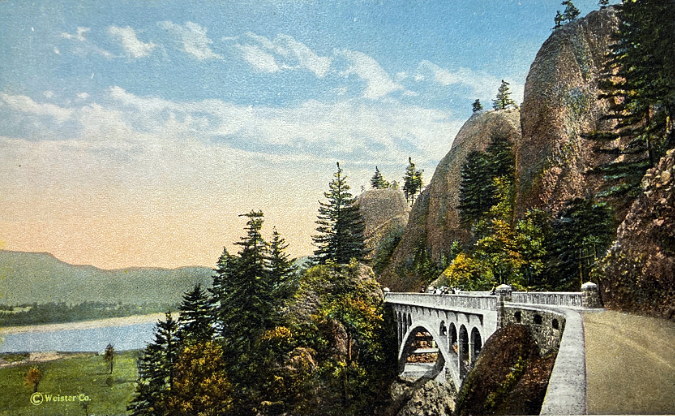
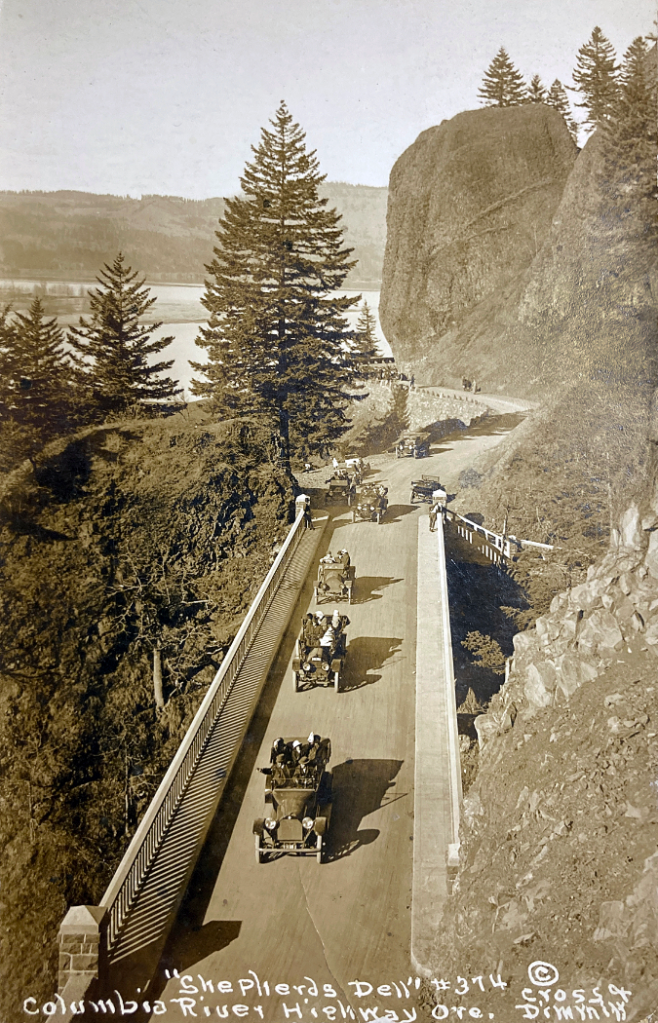
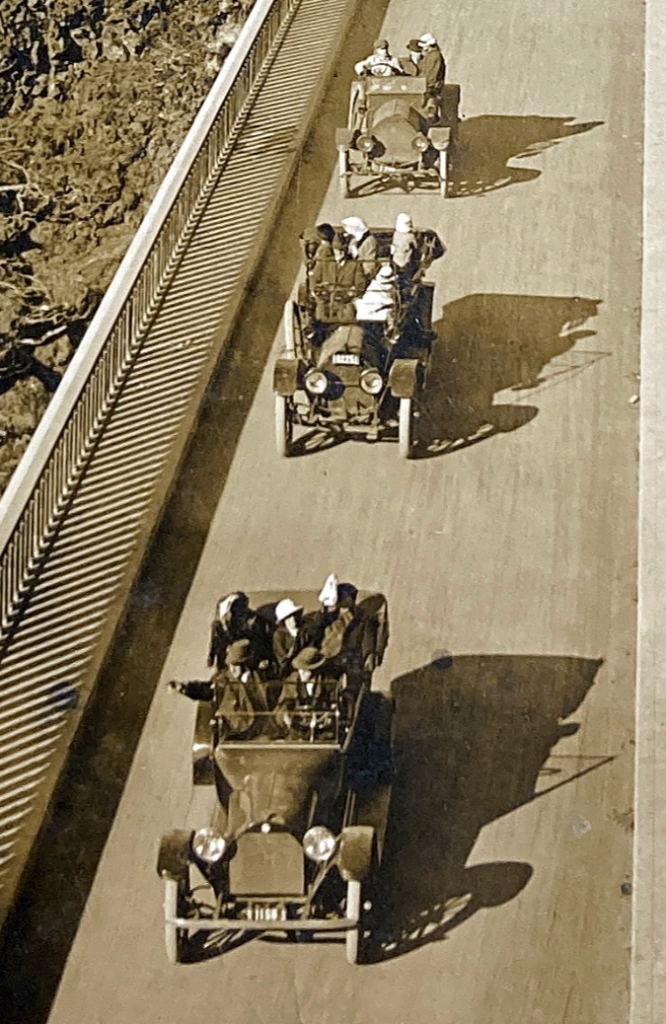
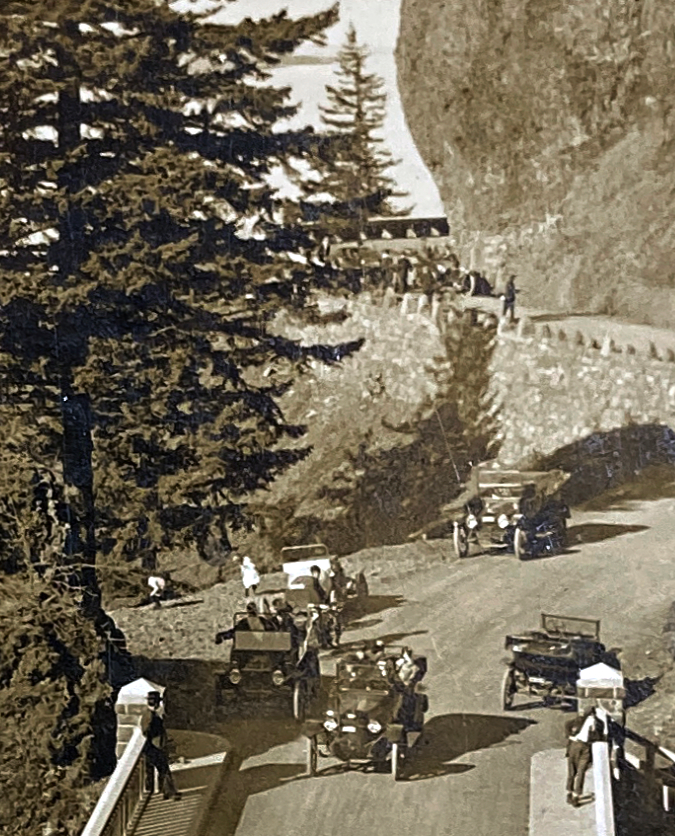
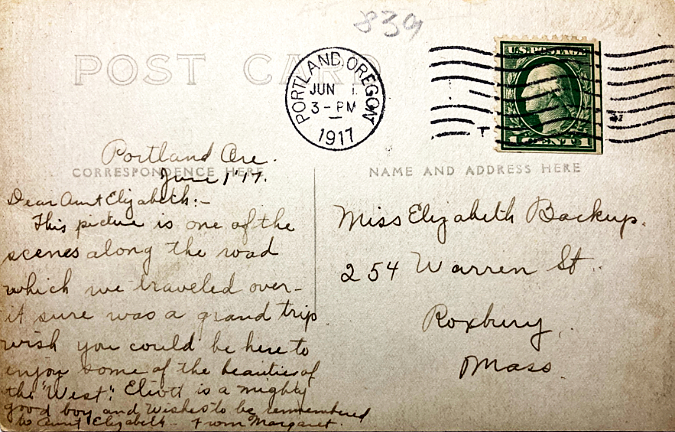
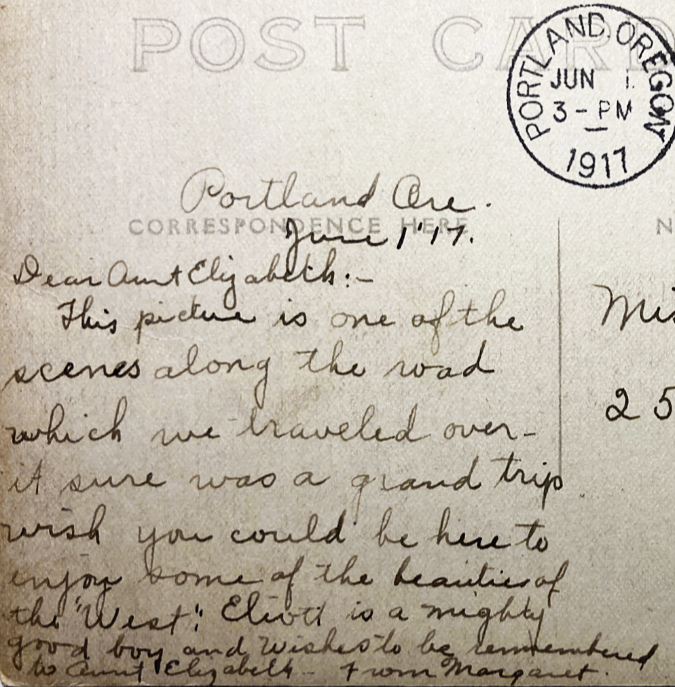
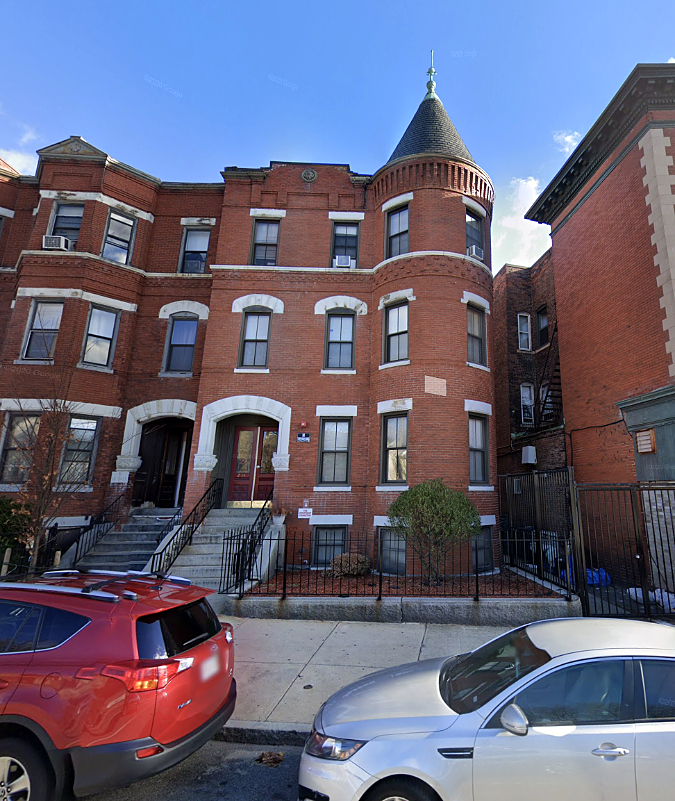
Great article. I’ve parked under this tree many times!
LikeLike
I enjoyed your post, as usual, especially your forensic analysis of the photos of Shepperd’s Dell and of your newfound postcard. I was inspired to see what I could find on ancestry.com about the Backups. Here’s my contribution:
The postcard writer, Margaret Ellen (Andrak) Backup, was born in 1895 in Montana and died in Tacoma in 2000 (at the age of 105). She was married to Elliott Backup, who was probably the nephew of “Aunt Elizabeth” Backup. She and Elliot were married 27 May 1917, suggesting that they were on their honeymoon trip in the west. Elliot died in Tacoma in 1978.
The postcard recipient, Miss Elizabeth Backup, was born in Massachusetts in 1842, the daughter of Scottish immigrants. She died in 1919. Her oldest sibling and only brother, John, was born in 1838. (I’m guessing he was Elliot’s father.) In 1910, at the age of 68, Elizabeth was a single housekeeper for a single man named Arthur Webster in a home on Greenville Street in Boston. By the 1920 Census, he and Emily Webster had married and had two daughters under age 2; and were still living in the Greenville Street house.
I can’t find a record of when “Aunt Elizabeth” moved to the Roxbury address or with whom, if anyone, she was living then.
LikeLike
Thank you, Bruce – terrific research! That Margaret was married to Eliott makes much more sense, and a honeymoon trip is also a great theory. This also changes the tone of the message to playful if she’s describing her new husband as a “mighty good boy”. She would have only been 22 years old at the time, after all, so that makes sense, too. That Margaret lived to the age of 105 is also amazing. I’ve added their names to the tags on this article in hopes that a relative or descendent might stumble across it. Thanks!
LikeLike
You may have already moved on from your Backups’ postcard. But I took advantage of a Mother’s Day offer from newspapers.com to access its articles. (Free is a good price for freeloaders like me.) I’ve taken screenshots of two obituaries for Margaret, one from Tacoma and the other from Burlington, Vermont. I think you’d enjoy them, since they add even more color to her life and interests. But I can’t see how to share them here. If you send me an email address, I will be glad to forward my “discoveries”. Bruce (babishopdx at me.com)
LikeLike